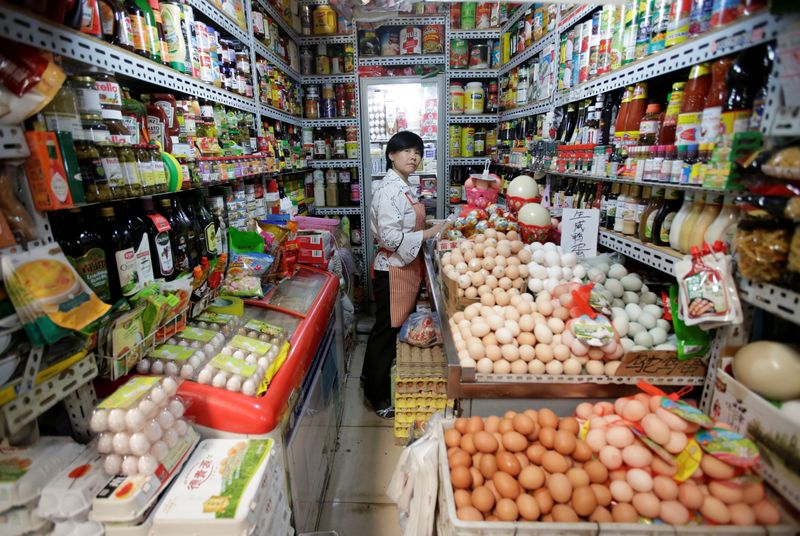By Lusha Zhang and Ryan Woo
BEIJING (Reuters) - China's consumer inflation steadied while factory-gate prices fell at a slower pace in December, giving Beijing room to stay the course on monetary easing as economic growth cools.
Some investors have worried that consumer inflation, hovering near eight-year highs, could make China's central bank more cautious about further stimulus.
China's consumer prices in December rose 4.5% from a year earlier, National Bureau of Statistics (NBS) data showed on Thursday, unchanged from November's pace, but lower than analysts' forecast of 4.7%. The gains were again fueled by a surge in pork prices as African swine fever ravaged the country's hog herds.
However, core inflation - which excludes food and energy prices - stayed largely subdued.
Analysts expect consumer inflation may stay elevated for sometime due to higher food prices during the Lunar New Year and as global oil costs spike amid recent geopolitical tensions.
"We forecast CPI will surge above 5% in January but the inflation will see a significant fall in the second half of this year due to increasing pork supply," said Niu Li, economist with the State Information Center.
In contrast, the producer price index (PPI), seen as a key indicator of corporate profitability, fell 0.5% from a year earlier, data showed. Analysts had expected factory-gate prices to fall 0.4% year-on-year, compared with a 1.4% drop in November.
The slower pace of decline in producer prices was in line with improving price components in recent factory surveys. Milder price deflation was partly supported by a recovery in petroleum, coal and other fuel processing industries, the NBS said in a statement.
However, most China watchers attributed December's milder price fall to year-earlier base effects and an increase in energy prices, noting manufacturing activity remains subdued.
"The easing of deflationary pressure on the industrial sector does not mean a significant improvement in industrial production. But with a thaw of Sino-U.S. trade frictions and macro policy supports, we may see PPI turn positive in Q2, 2020," said Liu Xuezhi, an analyst with Bank of Communications.
For the whole of 2019, PPI was down 0.3% compared with a rise of 3.5% the previous year.
China plans to set a lower economic growth target of around 6% in 2020, relying on increased state infrastructure spending to ward off a sharper slowdown, policy sources said. Growth has cooled from 6.8% in 2017 to 6% in the third quarter of 2019, the slowest since the early 1990s.
CPI STAYS ELEVATED
December consumer inflation was still driven largely by a continued surge in pork prices.
Pork prices jumped 97% year-on-year in December, data showed, accounting for 2.34 percentage points of the CPI increase. That compared with a 110.2% jump in November.
Pork is in high demand as China prepares to celebrate the Lunar New Year starting on Jan. 25. But analysts believe pork price inflation may be close to a peak as recent policies to stabilize production and support the recovery of the pig herd have begun to show results.
Core CPI for December grew 1.4% on-year, the same pace as the preceding month. For the full-year, China's CPI grew 2.9%, within Beijing's target of around 3% for the year but higher than 2018's 2.1% gain.
China plans to keep its inflation target at around 3% in 2020, unchanged from last year, Reuters reported citing sources, confounding speculation it might raise the bar to give it room for extra economic stimulus.
"CPI will not be a constraint on monetary policy. The policy easing will continue at a pace set by the central government," said Gao Ming, analyst with China Merchants Securities.
On Jan. 1, the People's Bank of China announced it was cutting the amount of cash that all banks must hold as reserves, the eighth time since early 2018 to free up more funds to shore up the slowing economy.
Economists at Nomura also expect another 50 basis point cut in banks' reserve requirement ratio in Q2 when inflation pressure eases, given strong growth headwinds, especially from the cooling property sector and a worsening fiscal situation.
